Channeling our picture-framing origin, Spacia Group applies that same precision, detail and ingenuity to art consulting, sourcing and creating. Our experienced art consultants work in collaboration with you—your specifications and design direction—to help define your unique space.
With a range of resources and capabilities at our disposal, Spacia thoughtfully and intentionally brings an inspired approach to every project. Think of art consultation as a bonus—not as an additional investment but as a complimentary part of your experience. Rely on our consultants to bring a fresh perspective, informed recommendations and imaginative solutions.
Use the following as a guide to get exactly what you've envisioned. This series is intended to aid you in specifying Spacia custom art. We'll break down the basics, first things first, framing & fitting, hanging, and substrates & such.
Part 4: Framing & Fitting Continued
Mat Board: A board, generally 4-ply (standard-single thickness), 6-ply or 8-ply, which serves decorative and functional purposes. As a design element, mats provide a visual transition from the art to the frame. Textures, colors and proportions influence the look and feel of the final framed piece. Functionally, mat boards separate the glass (or plexi) from the art, allowing air to circulate within the frame.
Mat Window: Also known as the exact mat opening, the window is the opening cut in a mat board through which the image can be viewed.
MAT BOARD STYLES
Single: As simple as it sounds, a single mat with the image centered, is the most classic mat board style. This frame treatment complements and elevates the look of the artwork and has the ability to make smaller works appear larger on the wall. Mat to the edge of image/artwork or include a reveal (leaving ¼” of white space between the edge of the image/artwork and the inside edge of the mat/the mat opening).
Double/Triple: Artwork is matted using separate mat boards, one on top of the other. The window opening (or dropout) of the bottom mat surrounds the image, while the top mat has a larger window allowing for a small border called a reveal. The width of the reveal varies; however, it generally averages between 1/8” and ½” and oftentimes is a different color. Double and triple mats are used to create depth and interest within the frame treatment. When using multiple mats, make sure the rabbet depth of the moulding (frame) is sufficient to house all of the framing materials.
Bottom Weighted: A bottom-weighted mat occurs when the bottom border of the mat board is wider than the top and sides.
Multiple Opening: A multiple or multi-opening mat is one that contains more than one window opening. Individual openings of identical or variable sizes and shapes are cut in one mat to display a number of items.
Float: The art is either elevated above a mat with spacers creating a slight shadow around the art or mounted directly to the mat with no space between. Glass can either then be mounted directly on top of the art, or it can be floated with foam core spacers.
Artwork Size: The measured size of the actual image to be seen when framed, not including borders or paper size. For example, an image with an 8” x 10” artwork size may be printed on a 9” x 11” paper to account for the addition of mat and frame without covering any of the image.
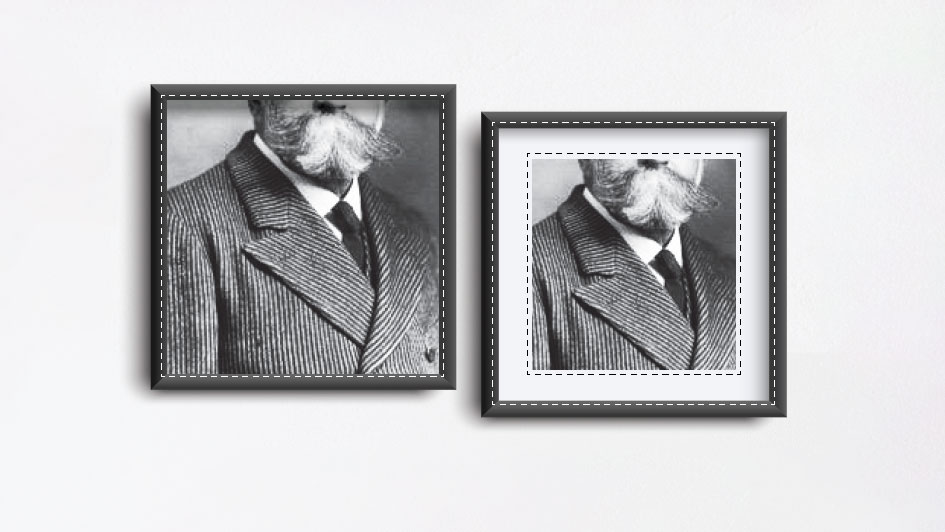
Typically, without a mat, a frame will cover 1/4” of the image. The same will apply with a matted print, however, the frame will cover 1/4” of the mat while the mat will cover 1/4” of the image.
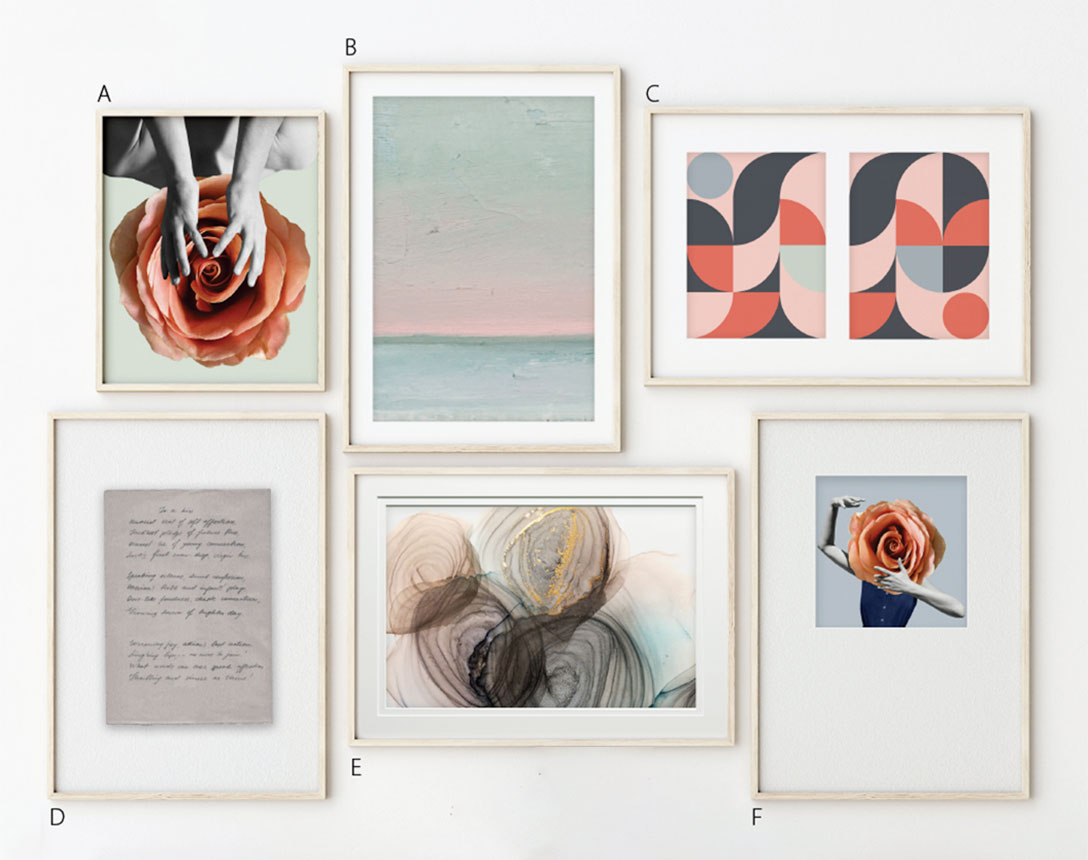
A no mat
B single mat
C multiple opening
D float
E double mat
F weighted mat
FRAMING METHODS (PRINT)
A few framing cross-sections that coincide with the examples above, plus a few others—
Blue = Glass
Thin Black Line = Print
Green = Foam Core
Orange = Mat Board
Brown = Backing
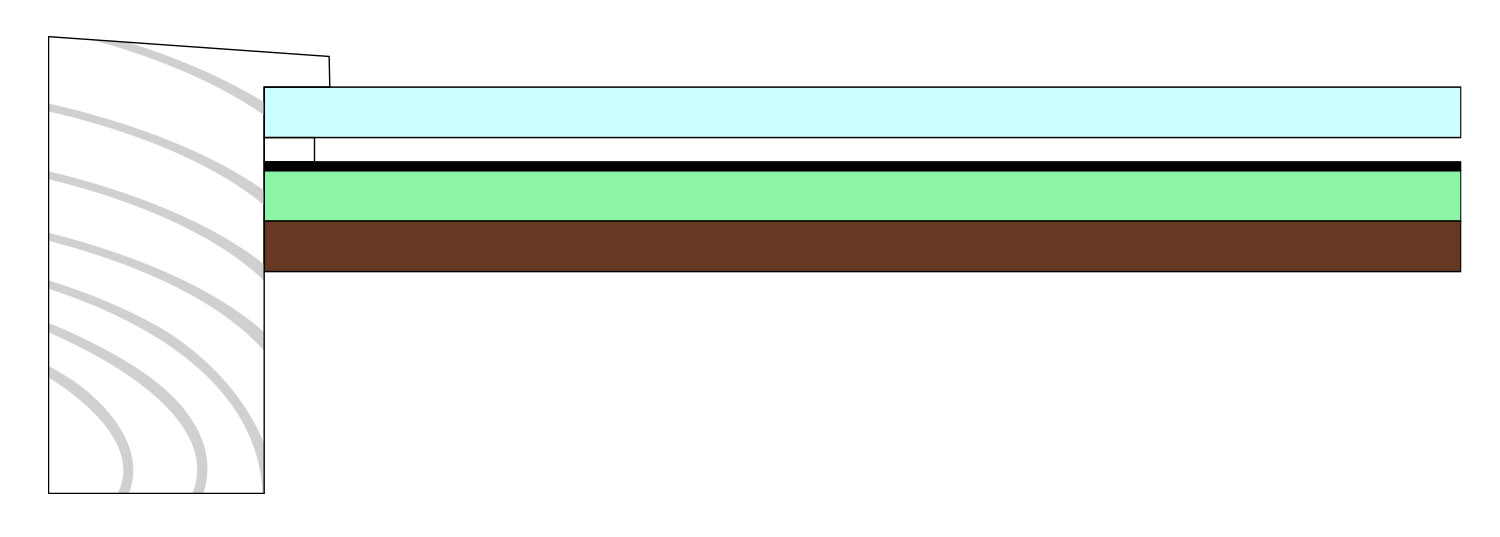
No mat, print is directly beneath the glass
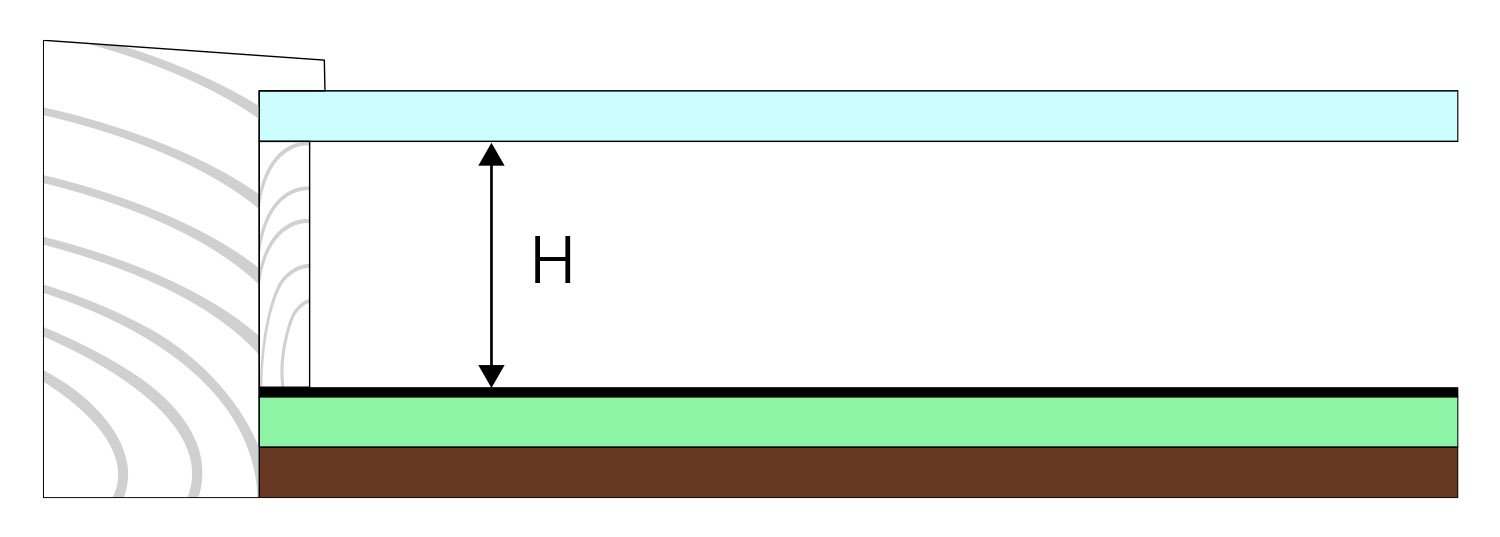
No mat, glass is floated above print with spacers.
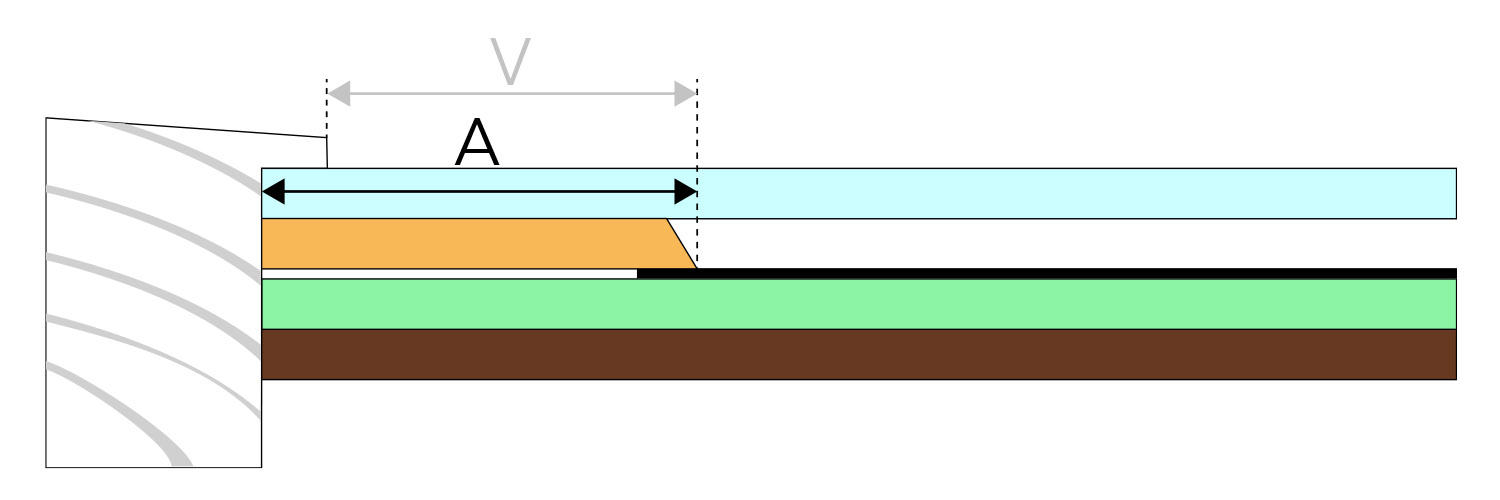
Single mat
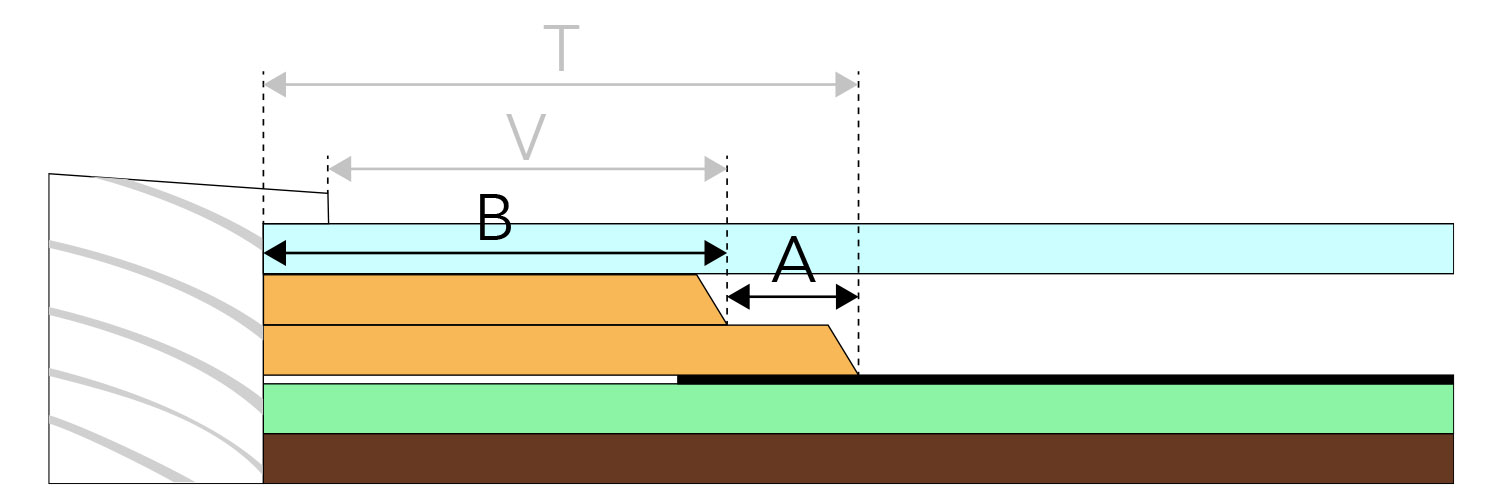
Double mat
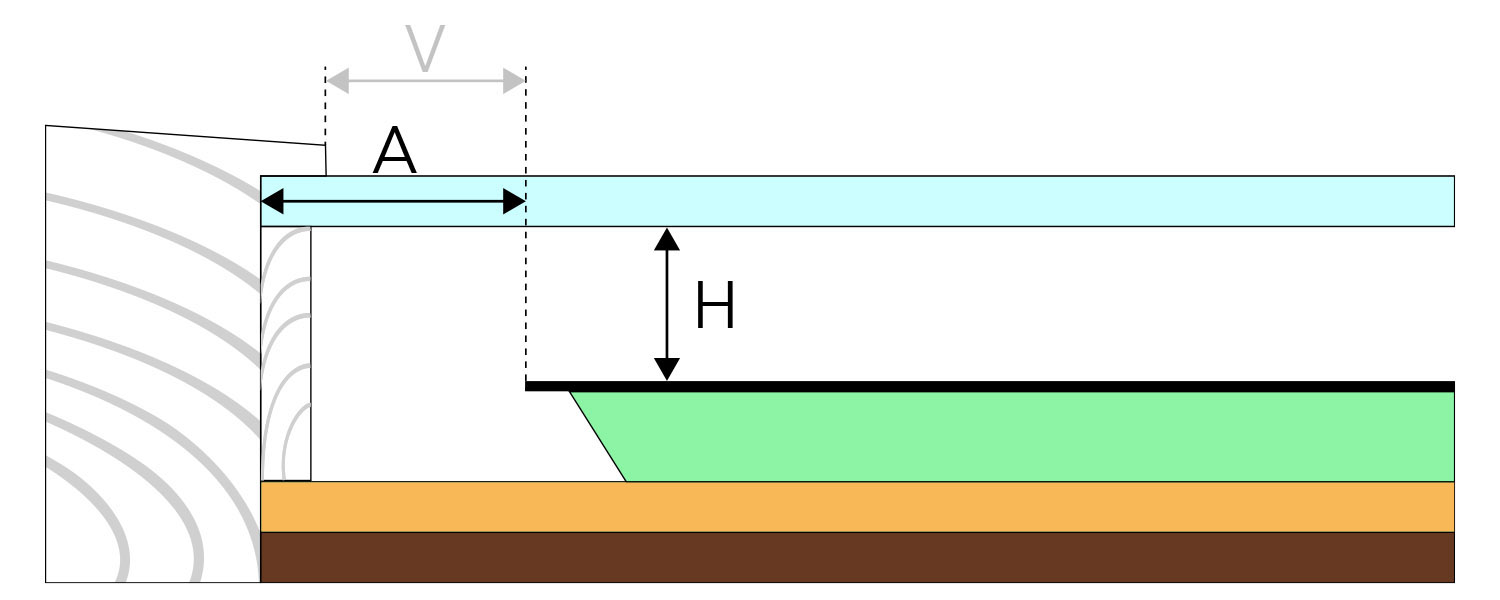
Float, artwork is elevated above mat with spacers & glass is floated with foam core (pictured, green). Art can also be mounted directly to mat board and sit beneath glass.
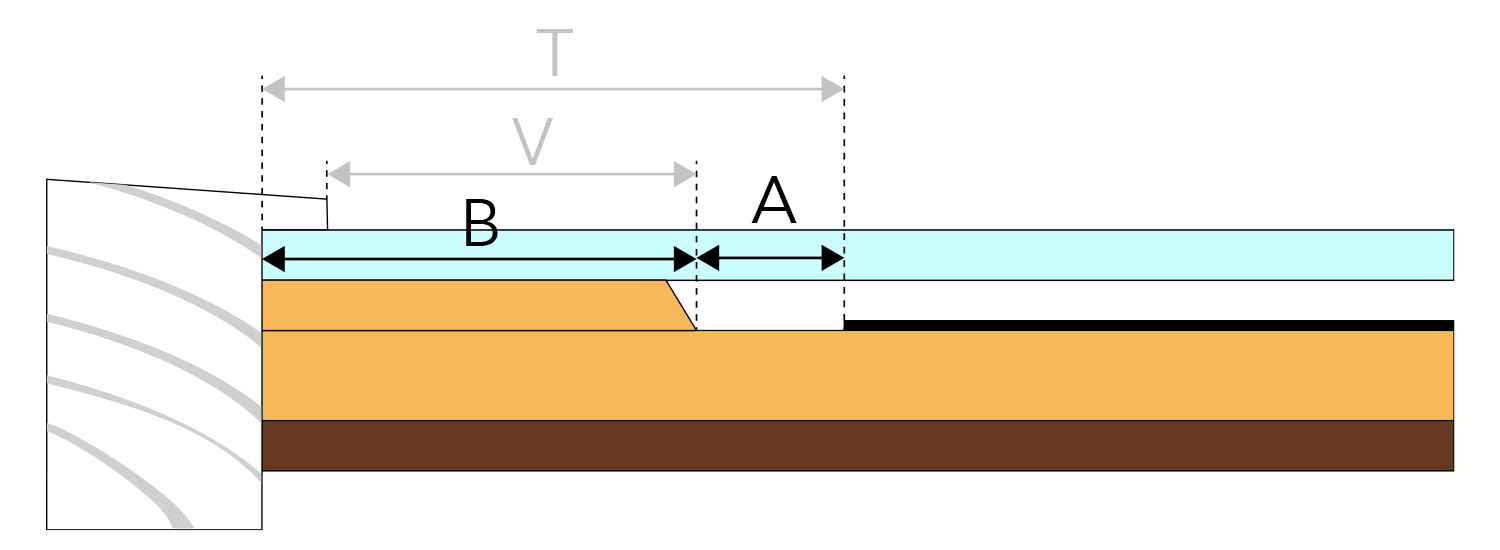
Single mat with gap
A similar look can be achieved by adding a printed border around the artwork in place of the actual mat board itself.
FRAMING METHODS (CANVAS)
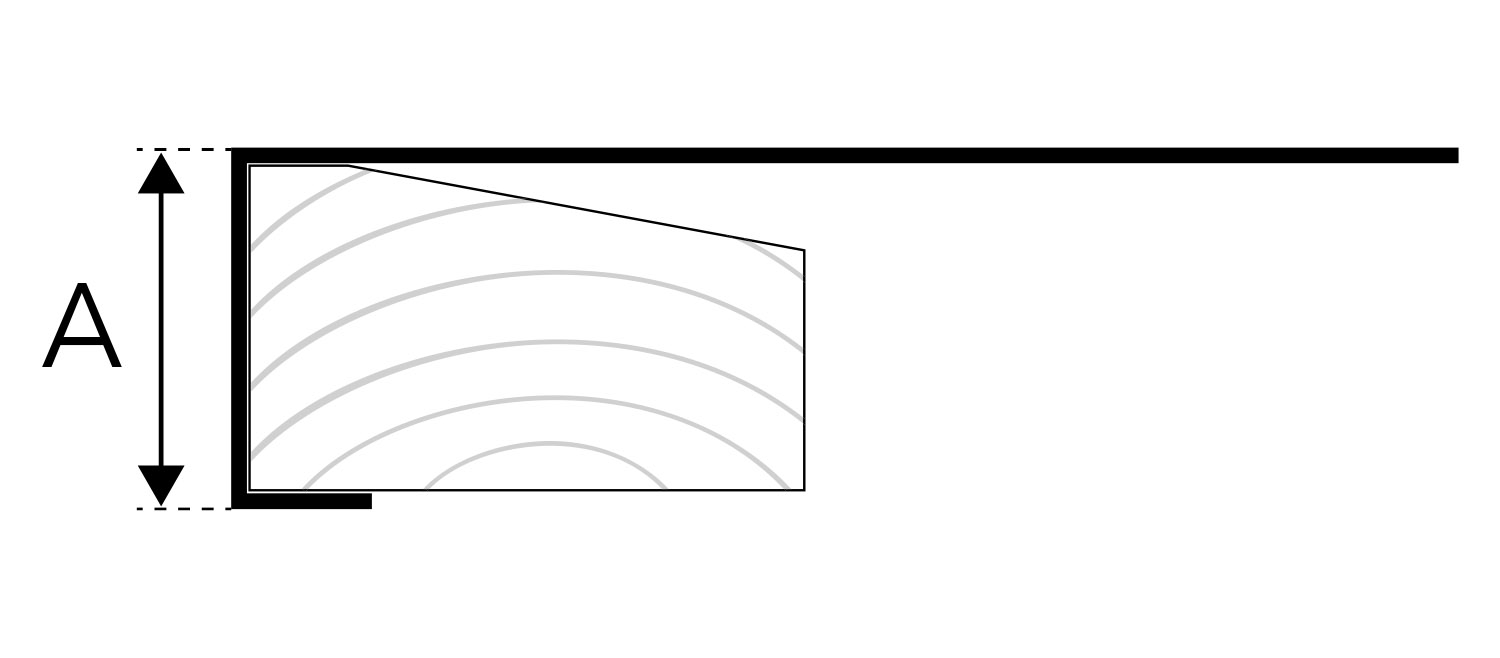 Gallery wrapped canvas
Gallery wrapped canvas
Note—Spacia Group includes hardboard backing just beneath the canvas (not pictured)
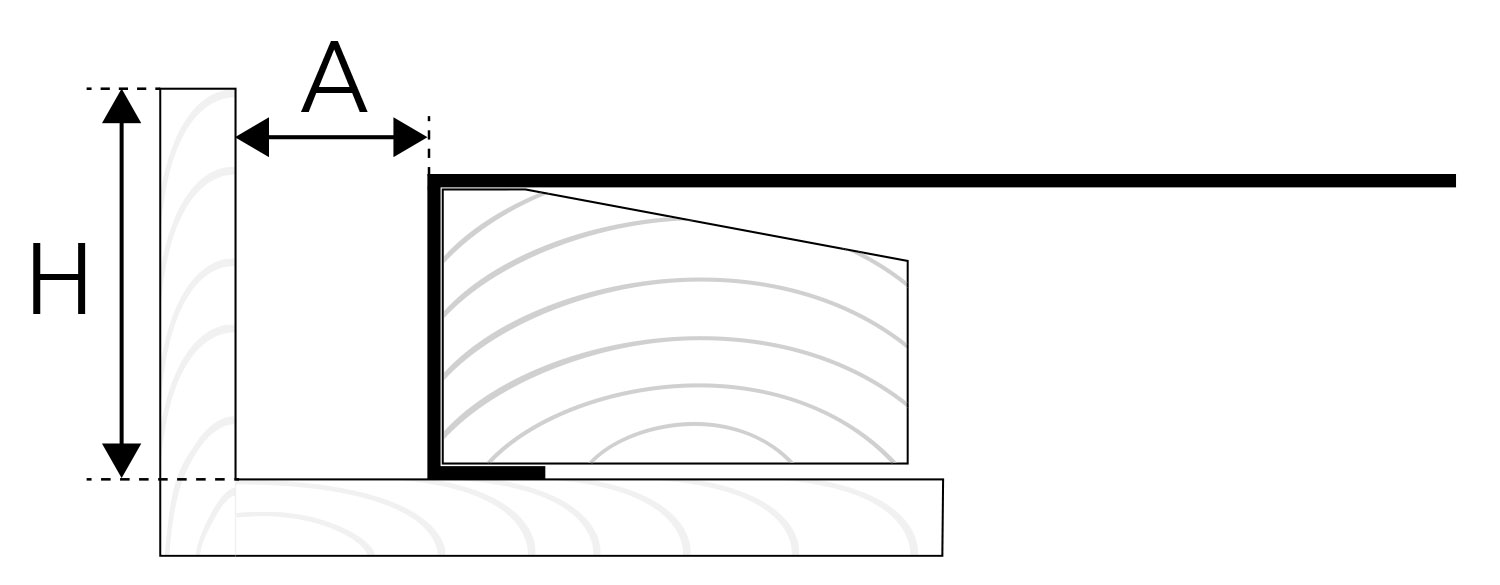
Gallery wrapped canvas with float frame
Note—Spacia Group includes hardboard backing just beneath the canvas (not pictured)
While framing methods are not limited to the examples above, these options are most popular among our hospitality, healthcare and corporate clients.
Next up, let's talk hanging...